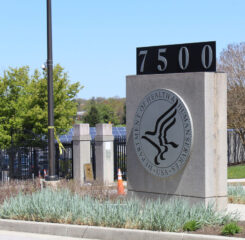The COVID-19 public health emergency (PHE) will end on May 11 and on May 8, the Centers for Disease Control & Prevention (CDC) released guidance for how health care settings should implement infection prevention and control going forward. Most notably, the Community Transmission Rates metric upon which healthcare settings such as nursing homes relied to determine mitigation measures including the use of universal source control (masking) will sunset with the end of the PHE and has been removed from guidance. Health care settings are now advised to consider several factors in determining the mitigation strategies that will best serve their settings and individuals served. In the updated guidance, the Appendix has a listing of metrics health care settings may use to determine their facility strategy. This includes consideration of guidance from state and local public health, evaluation of any local metrics that may exist, and taking cues from the surrounding community.
To this end, CDC has also updated guidance for how the general public should determine mitigation strategies. COVID Community Levels, upon which community guidance was previously based, will also sunset with the end of the PHE, and CDC has introduced a new metric based on hospital admission data that should be used by communities and the general public to determine when to implement source control and other mitigation measures. CDC notes that if the general public / surrounding community is recommended to mask based on hospital admission data metrics, health care settings should follow suit.
The updated infection control guidance for healthcare settings also includes a small change for nursing homes specifically: testing asymptomatic patients and residents upon admission or readmission to the nursing home is now at the discretion of the nursing home.
LeadingAge will continue to work with members and our partners at CDC as we transition beyond the PHE.

 Shutdown Week Three: Impact of Ongoing Closure on Affordable Housing
Shutdown Week Three: Impact of Ongoing Closure on Affordable Housing CY 2026 Home Health Final Rule: Advocacy Leads to Much-Reduced Cut
CY 2026 Home Health Final Rule: Advocacy Leads to Much-Reduced Cut


